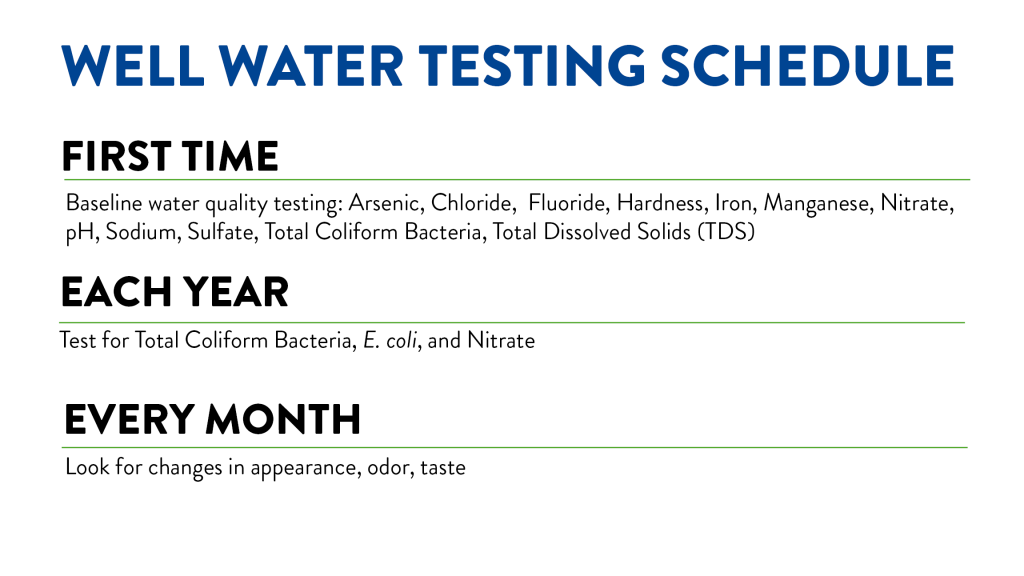
Alabama Private Well Program
Back to Water Resources Center /
The Alabama Private Well Program increases access to private well resources to empower, engage, and equip well users with the resources needed to protect their water systems.
core values
-
Delivering meaningful information to homeowners with private wells
-
Educating well owners on the importance of proper well stewardship
-
Serving as a resource for well owners and Extension personnel to obtain answers and information
WELL WATER IN ALABAMA
Thousands of Alabama residents rely on private water systems for water used for drinking, cooking, cleaning, and bathing. In fact, The Alabama Office of Water Resources reported that 11 percent of the population in Alabama relied on private wells in 2015.
With well ownership comes a specific set of responsibilities, as private well owners are responsible for the maintenance, testing, and treatment of their own water system. Wells can become contaminated through improper construction practices, failed maintenance, or poor stewardship practices around the well. Carefully monitoring and keeping a detailed record of the well can help in preventing future problems from occurring, while continuous testing can help assure safe drinking water quality for household utilizing the private well.
Read more about private wells and the aquifers you can find in Alabama here:
WATER TESTING
Water should be tested regularly for contamination. Even if a well appears clean and has no irregular smells, invisible microorganisms can be present and pose major health risks to those using the water. The Centers for Disease Control and Prevention (CDC) recommends that well owners check for mechanical issues each spring and perform a water quality test at least once a year. In addition to ensuring that the water is safe for drinking, a regular testing schedule helps establish a water quality record for the well.
Do you need to get your well water tested? Visit: for an interactive map of testing options available in your county.

TESTING WITH THE ALABAMA DEPARTMENT OF PUBLIC HEALTH
MORE INFORMATION
Additional resources can be found on the Alabama Cooperative Extension System website. Visit aub.ie/wellwater for more information about well water maintenance, testing, and treatment recommendations.
Water Well Construction Standards
Interpreting Drinking Water Test Results
Common Contaminants Found in Well Water
Decommissioning Unused or Abandoned Wells
Where to Get Your Well Water Tested
Specific Treatment Options for Water Well Owners
General Treatment Options for Wells
Problems With Water Yield in Private Water Wells
Flooded Wells: Shock Chlorination
How to Take a Well Water Sample
CONTACT US
Find more resources at aub.ie/wellwater
Questions? Contact Jessie Curl, ACES Water Program Project Coordinator
Email: jcurl@auburn.edu
Phone: 334.844.3809
